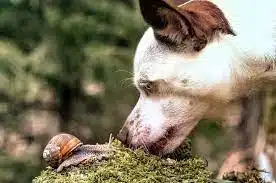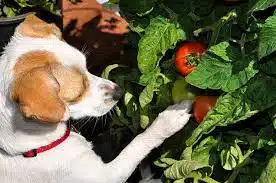 Slug Bait
Slug Bait
At this time of the year Nelson home gardeners are in full swing. One of the frustrations for gardeners is having garden pests destroy our good work. A few slugs can demolish a bed of lettuce seedlings overnight.
Slug baits containing metaldehyde are probably the most common garden pesticide poisoning we see. Cats are rarely affected. The baits seem to hold no interest for cats – even the curious ones. No, it is dogs who discover the baits amongst the lettuces and gobble them up. Many brands like Yates Blitzem have added a repellent which it is claimed will prevent ingestion by pets but we still see occasional poisonings.
In dogs metaldehyde causes drooling, vomiting and tremors which progress to continual convulsions. There is no antidote, but fortunately the metaldehyde usually causes vomiting before a fatal amount has been absorbed, so death is not usual. Treatment is anticonvulsants and hospitalisation on IV fluids for about 24 hours.
Products like Baysol contain methiocarb which causes similar signs and can also be fatal.

If you want to use slug baits I recommend you place them under heavy pottery planters in your vege garden. Raise the planters slightly on 4-6 stones so there is an attractive cool place for the slugs and snails to slither in and find the baits. Grow flowers in the pots to add colour to your vege garden, or if you must be productive you can try strawberries. I have also tried placing baits under a heavy board between rows of seedlings.
There are now a host of eco-friendly alternatives for managing slugs and snails. You will find options to suit you with a simple google search.
Insect Pests
There are many insect pests that can wreak havoc in a garden. These can be managed by a broad range of insecticides and the modern insecticides are much safer for our pets than the organophosphates that were dominant early in my career. However we still sometimes see cats poisoned with permethrins so careful storage, use and disposal of insecticides is critical. Read and follow the instructions. Especially the fine print!
Signs of permethrin poisoning are tremors progressing to convulsions. Cats are much more sensitive to permethrins than dogs and the most common cause of poisoning in cats is still the use of a permethrin flea product for dogs on a cat.
Organophosphates will cause a range of signs, usually drooling, vomiting, tremors, seizures and coma. Antidotes are available.

We have a beehive in our garden. This is a constant reminder that there are far more beneficial insects than insect pests. Insecticides are indiscriminate killers of the beneficial insects too. Lots of eco-friendly options exist for controlling insect pests in the home garden. Check them out. They may save you an emergency trip to the vet.
Hans Andersen and the Halifax team

 Slug Bait
Slug Bait
Recent Comments